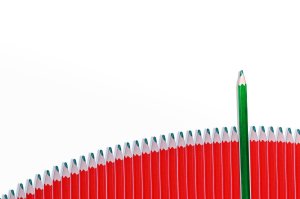What makes home sewists start to make their own clothes? And how does this relate to their imaginative and creative style of thinking? Lauren Cox stitches together the results of her research into the motivational patterns of sewists.
Continue readingCategory Archives: Creativity Research
Calling all performers and visual artists! How does your environment affect how you think?
Featured
Do you paint, dance or act? Perhaps you’re a budding novelist or poet? Maybe you write concertos in your spare time?
We’re looking for artists of all varieties to participate in a survey exploring how a person’s response to their environment affects their thinking style.
Continue readingRobots, Quiz, Action! The Psychology of Creativity and Expertise Lecture Series
Our blog may not have been that active recently, but we’ve been very busy behind the scenes preparing our latest series of free public online lectures, and finally they are here!
Three University of Buckingham experts in our Creativity and Performance Expertise research area will be speaking about some exciting new research areas and the overlaps between creativity, expertise and the real world. They will be taking place fortnightly on Wednesday evenings (UK time – 19.00 BST), starting this week!
Creativity and AI – Are Robots Smart?
On Wednesday 26th July, Dr Gillian Hill will be talking about the rise of AI and its links to creativity in her talk Creativity and AI – Are Robots Smart? You can book your place here.

We are hearing a lot about AI in the news and online at the moment, particularly from experts thinking about this from a technical perspective. But psychology has a lot of offer in this debate too, and Gillian will discuss how psychological theories of creativity can inform the picture.
Film-Making through the Lens of the Mind
For our second lecture in the series, Dr Kathryn Friedlander will be talking about what makes film such a mesmerising art. This takes place on Wednesday 9th August and you can book your place here.

In her talk, Kathryn turns the spotlight on the film-industry, zooming in on the features which elevate it to a creative art-form, such as cinematography, mental storyboarding, and conceptual expansion. She’ll also take a look at why some films win Oscars, while others win a Golden Raspberry; and she will explore the personalities of those who develop and communicate the creative story.
How do Successful Quizzers Know so Much?
Finally, Dr. Philip Fine asks how successful quizzers know so much. This is on Wednesday 23rd August and you can book your place here.

Quizzes are everywhere: on television, in the pub, online, at home on a Sunday afternoon around the Trivial Pursuit board. Expert quizzers all over the country can win large and luxurious prizes, and even TV fame (think The Chasers). But how do these successful super-quizzers develop their remarkable knowledge and have all those facts at their fingertips? Philip will discuss and explore possible answers to this question.
We very much hope you will join us for this exciting online lecture series Robots, Quiz, Action! The Psychology of Creativity and Expertise. We look forward to hearing your comments and questions at the webinars.
Sign up links are above and please do spread the word…as creatively as you can!
Image credits
Pictures in the mind – are they as creative as we imagine?
What goes on when we see images in our mind? And is the strength and vividness of these images related to our ability to think creativity? Kathryn Friedlander talks us through the new findings from her recent journal article and argues that it all might depend on what kind of imagery we tend to conjure up.
Continue readingWhat makes creatives stand out from the crowd?

We’re looking for interesting and creative people to take part in our current survey exploring how personality and attitudes relate to creative potential and wellbeing.
The survey is being run by our fabulous MSc student Kathleen, here at the University of Buckingham’s CREATE hub.
Intrigued? Just click here to find our more. The survey will take you about 15-20mins to complete and it’s totally anonymous.
Full survey link: https://buckingham.onlinesurveys.ac.uk/personality-creative-potential-and-wellbeing-survey
Image credits:
- Image by khamkhor from Pixabay
- Image from https://images.pexels.com/photos/17679/pexels-photo.jpg?auto=compress&cs=tinysrgb&h=350
Creativity and Leisure in COVID-19 – an update
We recently published our findings about creative pursuits under lockdown in a Frontiers Special Issue on ‘Creativity and Innovation in Times of Crisis (COVID-19)’. Here’s the take-away summary of what we found.
Continue readingCracking Psychology: Understanding the appeal of cryptic crosswords #3 – Anagrams
It’s a common experience – you have a blank grid in front of you, 1A isn’t helping, and there’s no obvious way to get going. Maybe you, too, scan the list of clues hoping for an anagram clue or two? In the third part of our ‘explainer’ series, Kathryn Friedlander takes a look at the psychology behind this popular clue form.
Continue readingCracking Psychology: Understanding the appeal of cryptic crosswords #2 – Rebus-type clues (‘Say what you see’)
In this second part of a series unpacking the psychology behind cryptic crossword solving, Kathryn Friedlander explores the connection between cryptic clues and the ‘rebus’ or ‘word-picture’ puzzle form.
Continue readingCracking Psychology: Understanding the appeal of cryptic crosswords #1 – Puns and misdirection
Nearly all of us enjoy a good joke now and again, but those who do cryptic crosswords seem particularly attracted to verbal humour. In the first of a series unpacking the psychology behind cryptic crossword solving, Kathryn Friedlander explores the many links between puns, verbal ambiguity, misdirection and the solving of cryptic crossword clues.
Continue readingThinking flexibly is key to cryptic crossword solving
When it comes to thinking about cryptic crossword solvers, what kind of image springs to mind? Maybe Chief Inspector Morse, a vicar, or a bowler-hatted Civil Servant? But would you be right…? Kathryn Friedlander shares new research lifting the lid on the mind of the cryptic solver – and finds that they are an academically able group, tending towards science, with fantastically flexible problem-solving abilities.
Continue reading